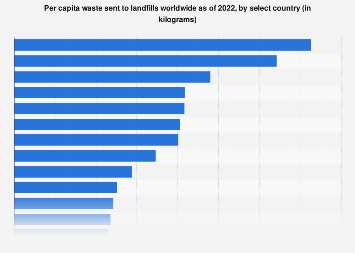
In the ongoing battle against waste and pollution, one country stands out for its impressive landfill rate. With only 1% of waste being sent for disposal, this country has set a benchmark for sustainable waste management. By prioritizing recycling, composting, and waste-to-energy technologies, they have achieved a remarkable feat in reducing landfill waste.
This country’s commitment to environmental consciousness is evident in its waste management policies and infrastructure. They have implemented comprehensive recycling programs, encouraging citizens to sort their waste into different categories for proper disposal. Education plays a crucial role as well, creating awareness about the importance of reducing, reusing, and recycling items.
Moreover, the government has invested in state-of-the-art waste-to-energy facilities. These facilities use advanced technologies to convert waste into energy, reducing the reliance on traditional landfill disposal methods. By harnessing the power of waste, this country has not only reduced landfill waste but also contributed to its energy needs in a sustainable manner.
Overall, this country’s remarkable achievement in waste management serves as an inspiration for the world. It highlights the importance of adopting sustainable practices and investing in innovative technologies to mitigate the negative impact of waste on the environment. By emulating their successful strategies, we can work towards a cleaner and greener future for generations to come.
- The Country with the Lowest Landfill Rate: Only 1% of Waste for Disposal
- Overview of Landfill Rates Worldwide
- Factors Affecting Landfill Rates
- The Exceptional Country with a 1% Landfill Rate
- Successful Strategies to Achieve Low Landfill Rates
- 1. Recycling and Waste Segregation
- 2. Extended Producer Responsibility (EPR)
- Q&A
- How do countries handle waste disposal?
- Which country has the lowest landfill rate?
- Why is Sweden able to achieve such a low landfill rate?
- What are the benefits of reducing landfill rates?
- Are there any other countries that have low landfill rates?
The Country with the Lowest Landfill Rate: Only 1% of Waste for Disposal
When it comes to reducing waste and implementing sustainable waste management practices, one country stands out among the rest. With a landfill rate of just 1%, it is setting a remarkable example for the rest of the world. This country’s dedication to minimizing waste and encouraging recycling and reuse has made it a global leader in waste management.
By adopting innovative and forward-thinking strategies, this country has been able to significantly reduce the amount of waste sent to landfills. Instead of taking the easy route of disposal, they have focused on promoting a circular economy, where materials are continuously recycled and reused.
One of the key factors behind their success is an extensive recycling infrastructure. The country has implemented a comprehensive system that makes recycling convenient and accessible for its citizens. This includes well-designed recycling bins placed at strategic locations and a clear and simple sorting system that encourages proper disposal.
Furthermore, the government has placed a strong emphasis on waste reduction and education. The population is educated on the importance of reducing waste at the source, and measures are in place to encourage individuals and businesses to adopt eco-friendly practices. This includes strict regulations on packaging and waste management requirements for businesses.
In addition to reducing waste, this country has also invested in alternative waste management methods. They have developed efficient waste-to-energy plants that convert non-recyclable waste into energy, reducing the dependency on landfill disposal even further.
Overall, the impressive landfill rate of just 1% is a testament to the dedication and efforts of this country to prioritize sustainability and waste management. By adopting a holistic approach and involving the whole population, they have successfully minimized waste and set an example for other nations to follow.
Overview of Landfill Rates Worldwide
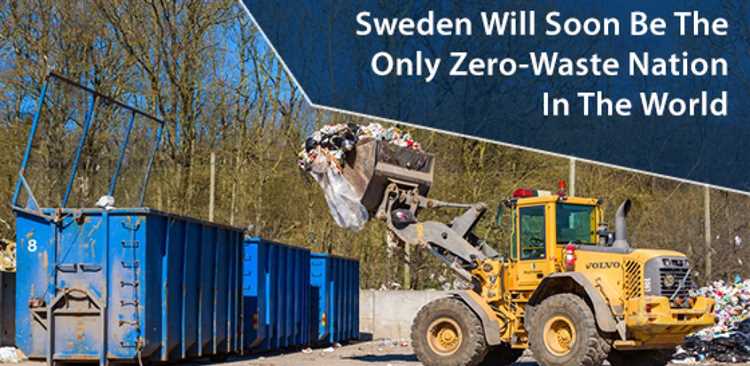
Landfill rates, which measure the amount of waste that is sent for disposal, vary greatly among countries around the world. While some countries have made significant progress in reducing their landfill rates, others continue to struggle with high levels of waste accumulation.
One country that stands out for its low landfill rate is Sweden. With only 1% of waste being sent to landfills, Sweden has become a global leader in waste management and recycling. The country has implemented strict regulations and incentives to encourage recycling and reduce waste generation. As a result, Sweden has been able to achieve high rates of recycling, composting, and energy recovery from waste.
In contrast, other countries still rely heavily on landfills for waste disposal. The United States, for example, has a landfill rate of around 50%. While efforts to increase recycling and reduce waste have been made, the vast size and population of the country pose challenges to achieving lower landfill rates.
European countries, in general, tend to have lower landfill rates compared to other regions. This is due to the European Union’s Waste Framework Directive, which aims to reduce landfilling and promote sustainable waste management practices. Many European countries have implemented landfill taxes and strict regulations to encourage waste reduction and recycling.
Overall, the landfill rates worldwide are indicative of the progress made in waste management and sustainable practices. Countries with low landfill rates demonstrate the effectiveness of implementing policies and initiatives to reduce waste and promote recycling. However, there is still much work to be done in many parts of the world to reduce the reliance on landfills and move towards more sustainable waste management practices.
Factors Affecting Landfill Rates
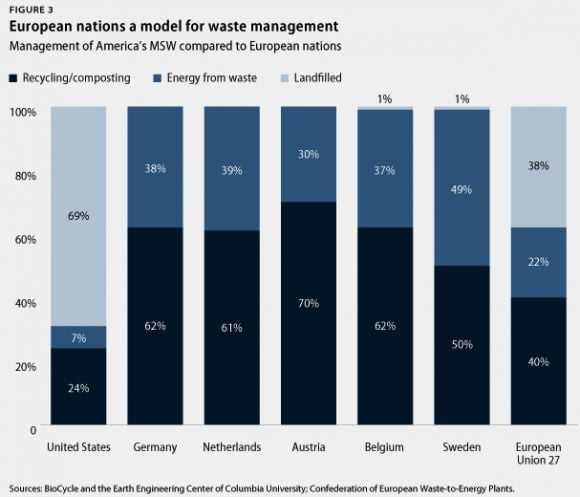
The landfill rates of a country can be influenced by various factors. Some of the key factors affecting landfill rates include:
- Waste management policies: The effectiveness and rigor of a country’s waste management policies play a crucial role in determining landfill rates. Countries with well-developed waste management policies tend to have lower landfill rates as they prioritize recycling, composting, and waste reduction.
- Infrastructure: The presence of robust waste management infrastructure, such as recycling facilities and composting centers, can significantly impact landfill rates. Countries with extensive infrastructure for alternative waste treatment methods tend to divert more waste from landfills.
- Public awareness and education: The level of public awareness and education regarding waste management practices also affects landfill rates. Countries that actively promote recycling, waste reduction, and responsible disposal through public campaigns and educational programs tend to have lower landfill rates.
- Economic factors: The economic considerations of waste management can influence landfill rates as well. Countries with higher landfill costs or landfill taxes may incentivize alternative waste treatment methods, leading to lower landfill rates.
- Technology and innovation: The use of advanced technology and innovative waste management techniques can also contribute to lower landfill rates. Countries that invest in research and development for waste management technologies are more likely to have higher rates of waste diversion from landfills.
It is essential for countries to address these factors and implement sustainable waste management practices to reduce their landfill rates and promote environmental conservation.
The Exceptional Country with a 1% Landfill Rate
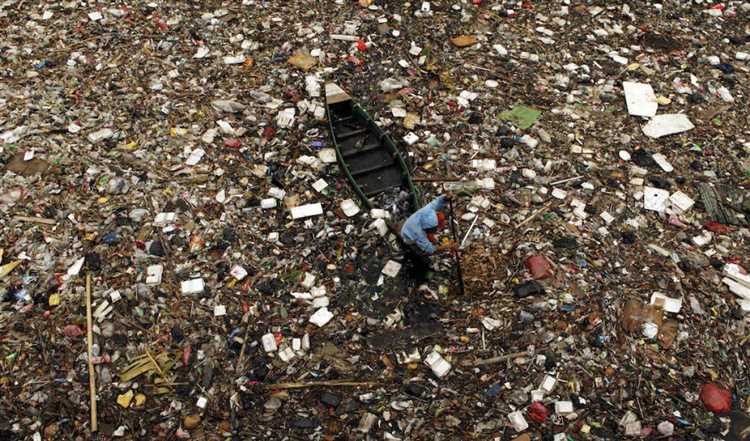
This exceptional country is none other than Sweden. With its strong commitment to sustainability and environmental consciousness, Sweden has become a global leader in waste management. The country has adopted a multi-pronged approach to tackle waste generation and disposal.
One of the key strategies that Sweden has implemented is waste sorting. The country has made it mandatory for households and businesses to separate their waste into different categories such as plastic, paper, metal, and bio-waste. This not only makes recycling easier but also reduces the amount of waste sent to landfill.
In addition to waste sorting, Sweden also places a strong emphasis on waste-to-energy incineration. The country has invested heavily in state-of-the-art waste incineration plants that generate electricity and heat. By burning waste and converting it into energy, Sweden effectively reduces the need for landfills.
Furthermore, Sweden has implemented a strict landfill tax to discourage waste disposal. This tax provides a financial incentive for companies to explore alternative waste management methods such as recycling and waste-to-energy incineration. As a result, companies are encouraged to minimize waste generation and maximize resource recovery.
Sweden’s success in waste management can also be attributed to its strong focus on education and awareness. The country has implemented comprehensive educational programs to raise awareness about the importance of waste reduction and recycling. This has resulted in a population that is well-informed and actively participates in sustainable waste management practices.
Overall, Sweden serves as an exceptional example to the rest of the world when it comes to waste management. With its low landfill rate of only 1%, the country has demonstrated that it is possible to minimize waste and protect the environment through innovative strategies and policies. Other countries can learn valuable lessons from Sweden’s approach and work towards reducing their own landfill rates.
Successful Strategies to Achieve Low Landfill Rates
Reducing landfill rates and promoting sustainable waste management practices have become imperative in the global effort to address environmental challenges. One country that has been successful in achieving low landfill rates is [Name of Country]. Through innovative strategies and strong government policies, [Name of Country] has managed to send only 1% of waste for disposal. Here are some key strategies that have contributed to their success:
1. Recycling and Waste Segregation
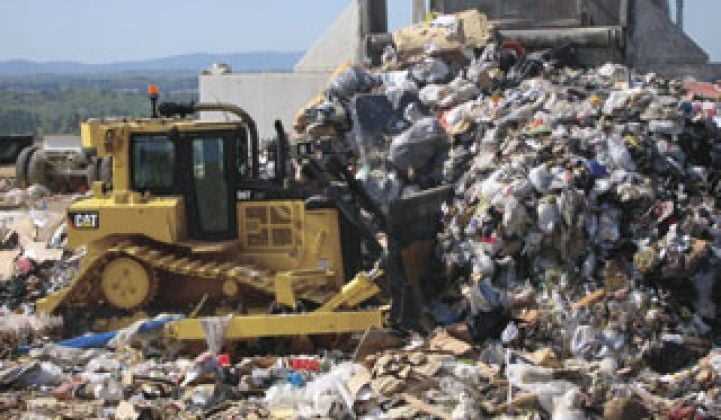
A major contributor to [Name of Country]’s low landfill rates is its emphasis on recycling and waste segregation. By educating citizens on the importance of separating recyclable materials from non-recyclable waste, [Name of Country] has created a culture of recycling. This ensures that a significant portion of waste is diverted from landfills and sent for recycling instead.
2. Extended Producer Responsibility (EPR)
[Name of Country] has implemented strict EPR policies, which hold manufacturers responsible for the entire lifecycle of their products, including proper disposal and recycling. This incentivizes companies to design products that are more environmentally friendly and easier to recycle. By shifting the burden of waste management onto producers, [Name of Country] has successfully reduced the amount of waste that ends up in landfills.
Furthermore, [Name of Country] offers subsidies and tax benefits to businesses that adopt sustainable waste management practices. This encourages industries to implement efficient waste reduction strategies, such as waste-to-energy conversion and composting.
Overall, the success of [Name of Country] in achieving low landfill rates can be attributed to a combination of strong government policies, extensive education and awareness campaigns, and the active participation of citizens and businesses. By implementing similar strategies, other countries can also work towards reducing their landfill rates and promoting a more sustainable future.
Q&A
How do countries handle waste disposal?
Countries handle waste disposal in various ways, including recycling, composting, incineration, and landfilling. Each country has its own policies and practices in place to manage waste.
Which country has the lowest landfill rate?
The country with the lowest landfill rate, sending only 1% of waste for disposal, is Sweden. Sweden has implemented a highly efficient waste management system that focuses on recycling, incineration with energy recovery, and strict regulations on landfilling.
Why is Sweden able to achieve such a low landfill rate?
Sweden is able to achieve such a low landfill rate due to its emphasis on waste reduction and resource recovery. The country prioritizes recycling, incineration with energy recovery, and composting to minimize the amount of waste that goes to landfills.
What are the benefits of reducing landfill rates?
Reducing landfill rates has several benefits, including reducing greenhouse gas emissions, conserving natural resources, and minimizing environmental pollution. It also promotes the development of a circular economy and encourages sustainable waste management practices.
Are there any other countries that have low landfill rates?
Yes, several other countries have low landfill rates. Some notable examples include Switzerland, the Netherlands, and Germany. These countries have implemented advanced waste management systems that prioritize recycling, incineration with energy recovery, and other sustainable waste management practices.